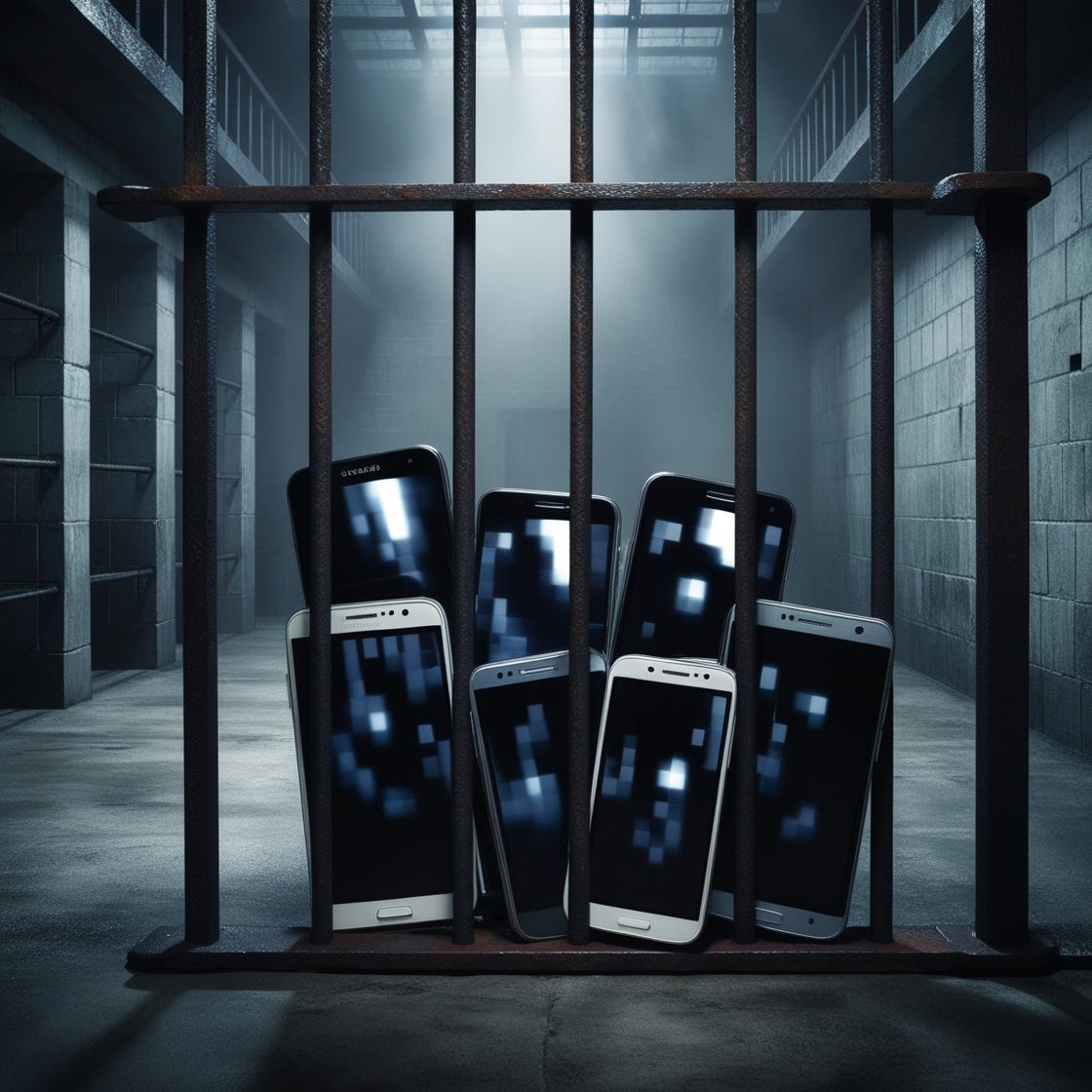Cellphone Bans in Schools May Harm Youth
In at least one county in Florida, cellphone bans are leading to more suspensions...which is bad.
In 2023 Florida became the first state to institute a statewide cellphone ban in schools during instructional hours. Orange County went beyond this, banning cellphones even during non-instructional hours such as lunch. Administrators appear to be delighted. But do we have evidence that these bans are helpful?
Research on cellphone bans in schools is sparse. We simply have no high-quality randomized controlled trials to suggest cellphone bans help students. What evidence we have might warn us to be cautious. A meta-analysis I conducted of social media reduction experiments found no evidence reducing social media time improves mental health. Further, other research finds that smartphones have little impact on attention or cognition. To be fair, the studies involved are often of poor quality and seldom pertain directly to schoolkids. Yet they do not provide a sound foundation for policies such as cellphone bans. A recent research review of school cellphone bans concluded: “Overall, our study suggests the evidence for banning mobile phones in schools is weak and inconclusive.”
Cellphone bans may feel intuitive to older adults, but do they actually work? And are there any downsides? About 68% of adults support cellphone bans in class, although only 36% support banning phones outside of class. Indeed, there’s been surprising pushback from many parents who opposed complete cellphone bans in schools.
Although cellphone bans are put in place to ostensibly help students, they may actually harm some students. Graciously, the Orange County School District provided me with data on students who had been suspended for violating cellphone bans. Groups such as the National Education Association and National Institute of Justice have pointed out that suspensions do great harm to students. Suspensions not only worsen educational outcomes but are actually predictive of adult arrest records. In the first year of Orange County School District’s cellphone ban, approximately 660 students received suspensions for violating cellphone policies. That is hundreds of children who’ve been directly harmed by these bans.
The district’s media relations officer was quick to point out to me: “…the district has seen the following improvements as a result of the cell phone policy. In High Schools, there has been a reduction of 62% in threats to school and major campus disruptions are down 69%. Middle Schools have also seen that threats to school have declined 76% while major campus disruptions are down 54%.” However, I had difficulty verifying these claims. When I asked for year-to-year changes in referrals for bullying or assaults, mental health referrals or overall GPA I was told “The data the person below [me] is requesting does not exist. Any data provided to him will be misleading.”
Schools may be mistaking national trends in improvement in student behavior and learning as evidence for the effectiveness of cellphone bans. Aside from some increases between 2020 and 2022, youth violence has been decreasing for over 30 years. As such, any changes in threats or disruptions may simply reflect a national trend, not anything specific to Orange County schools. When I looked at data on the Florida Department of Education’s standardized testing scores, Florida schools, including Orange County, do show improving testing scores. However, I also looked at standardized testing scores for South Carolina, which does not have a cellphone ban. South Carolina, too, is showing improved testing scores. Once again, this appears to be a national trend, not an impact of cellphone bans. According to the CDC, youth mental health improved in 2022 and 2023, before cellphone bans. Very likely, kids are recovering from the Covid19 years and school closings, not responding to cellphone bans.
Unfortunately, Orange County (and Florida) put a sweeping policy in place before any evidence this policy would be effective. This policy will harm many students due to suspensions, put increased disciplinary pressure on teachers, put strain on families, all without improving student outcomes. We don’t know if these efforts work, but now policy makers have invested in them and have sunk costs. For that reason, we can’t believe rosy stories coming from administrators or policy makers who will be loathe to admit they invested time and resources into a purposeless project.
Worse, these policies may distract from real issues facing students. At the heart, students today use their cellphones for the same reason students in the 80s took naps, doodled, or talked with their friends. Too often, school is boring. Cellphones are merely a symptom of this, not a cause. But, yet again, we’re indulging in moral panic rather than fixing real issues.




